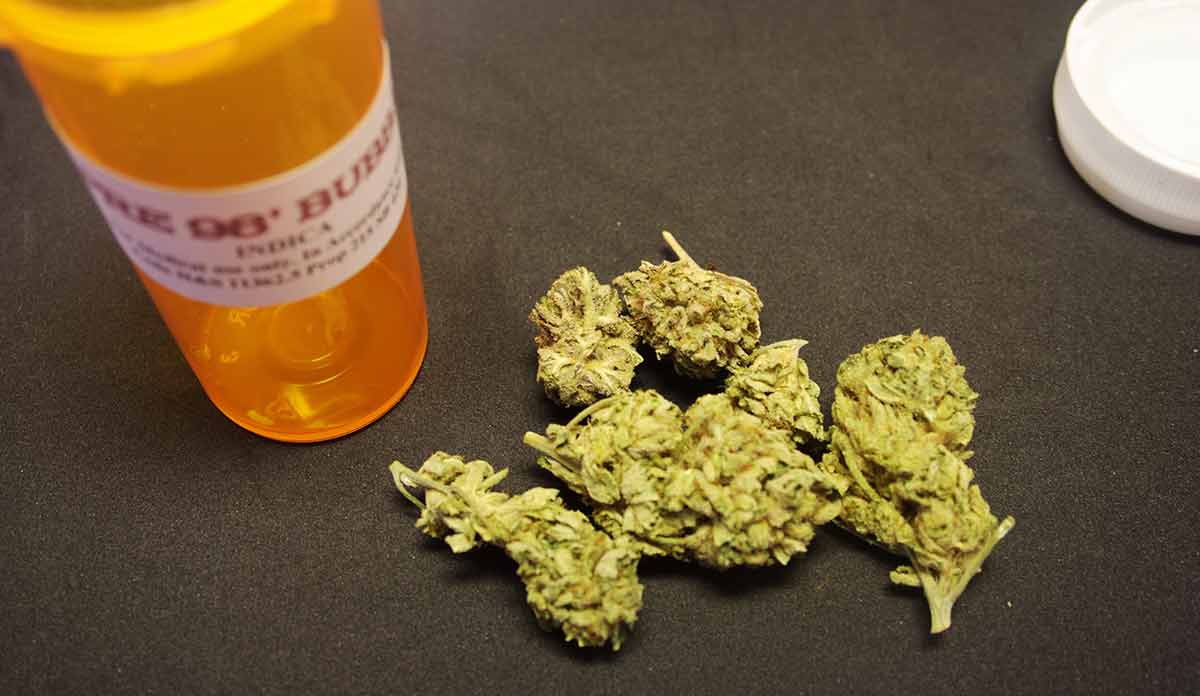This November, Massachusetts voters will decide on ballot question 4, which proposes to legalize the retail sale of marijuana and an array of products infused with its active ingredient, delta-9-tetrahydrol cannabinol (THC), to adults over age 21. The new law would allow a for-profit industry to develop and market new THC-based products in its attempt to appeal to broader swaths of the population and encourage new users. As the ballot initiative stands, the “Cannabis Advisory Board” charged with regulatory enforcement would include individuals who work for the industry. I oppose the proposed legislation because I believe that the proposal threatens public health in the service of commercial profit. In this editorial I examine in detail common arguments in support of marijuana legalization.
Personal Freedom
One of the foremost arguments in support of marijuana legalization is the sovereignty of individuals to engage in behaviors associated with modest health risks. Marijuana is associated with both acute and long-term health consequences,1–3 though using alcohol and tobacco as comparators, these harms may fall within the range generally considered acceptable to allow for individual decision-making.
A majority of voters in Massachusetts agreed with this argument and gave adults access to marijuana without legal consequence by decriminalizing it in 2008. This status would not be impacted by the proposed legislation. The biggest policy shift introduced by Question 4 would be to allow the manufacture and distribution of marijuana , and thus support a robust commercial marijuana market within the Commonwealth.
Marijuana is an addictive substance; use results in neurological and behavioral changes similar to those of other psychoactive substances.4 Commercialization of addictive substances within the free market system has historically been problematic as product developments that boost sales tend to also make them more addictive.5 Market driven innovations have made both alcohol and tobacco substantially more health-harming .6,7 The same pattern is already underway with marijuana. States with medical marijuana laws have higher potency and more addictive marijuana in both their dispensaries and their illegal markets compared to states where marijuana remains illegal.8,9 The legislation proposed in Question 4 is particularly problematic because it lacks a clear definition of marijuana, thus allowing manufacturers extensive latitude to innovate. In common language, marijuana refers to the dried leaves and stems of the cannabis plant, though in Colorado the fastest growing part of the market is “edibles”—candies and pastries laced with highly potent cannabis oil—that are attractive to children, poorly understood in terms of health risk and likely not what voters envision as “marijuana.” Ironically, the rising rates of addiction that are predictably associated with these changes constrict individual choice rather than enhance it.
While the proposed legislation would legalize the sale of marijuana only to adults over age 21, the associated advertising and marketing would inevitably drive up youth demand. The retail sale of marijuana would serve to normalize use, further reducing barriers to youth initiation.
Marijuana use, adolescent health and youth access
Marijuana’s harmful effects on youth have been well documented. Adolescence is a period of remarkable brain development that is particularly vulnerable to marijuana use.
Studies have shown that marijuana use during adolescence is associated with both changes in brain structure and function
.11–14 Long-term studies show that youth who use marijuana regularly have lower educational attainment, lower adult employment rates, lower life satisfaction, lower average earnings, and more health problems.13
While the proposed legislation would legalize the sale of marijuana only to adults over age 21, the associated advertising and marketing would inevitably drive up youth demand. The retail sale of marijuana would serve to normalize use, further reducing barriers to youth initiation. Marketing restrictions have historically been of limited utility when tested against the potential for substantial profits. While it is illegal for tobacco companies to market cigarettes to youth under age 18, the familiar story of Joe Camel is a good example of how pernicious advertising can be.
Legalization has been proposed as mechanism to reduce youth access by taxing and regulating marijuana, raising the price, eliminating the black market and making shop owners gatekeepers, though this approach is not likely to be successful in Massachusetts. Taxes that result in high prices may well allow a black market to continue to thrive—resulting in both legal and illegal access points for youth. The federal prohibition on marijuana prohibits sales across state lines; there is little to prevent illegal and less expensive marijuana to cross borders from neighboring states.
The empiric data reflecting the impact of legalization on youth marijuana use is limited and should be interpreted with caution. The full effects are predicted to lag after policy changes as the industry matures. The evidence to date indicates that marijuana use by minors has indeed increased after legalization in states with more liberal marijuana policies. Youth marijuana use in Colorado is now number one in the nation, according to the only representative sample of data available for that state.15
Racial Disparities and Marijuana Arrests
Racial disparities within the justice system are undeniable and drug arrests are higher among blacks and Latinos. While posed as a solution,
marijuana legalization does not solve racial injustice, and in the case of minors, aggravates it
. Because of increased youth use, two years after legalization in Colorado, arrests of underage Latinos and blacks had both risen (29% and 58% respectively) while arrests of white youth have fallen 8%.16 Lower socioeconomic neighborhoods in Colorado are more likely to have larger zoning areas for marijuana dispensaries, making it more difficult for residents to limit these establishments.17 Racial injustice requires systemic reform and is not solved by legalization of marijuana.
Summary
Loose regulation of alcohol and tobacco industries has undeniably failed to protect public health. The proposed legislation would have us repeat these mistakes with marijuana. When it comes to addictive substances, new regulatory approaches are warranted, less we once again entrust our public health to private industry.
Portions of this article were previously published in the Huffington Post on November 4, 2016. f
Featured image by Mark (flickr:eggrole).
References:
1. Kuepper R, van Os J, Lieb R, Wittchen H-U, Höfler M, Henquet C. Continued cannabis use and risk of incidence and persistence of psychotic symptoms: 10 year follow-up cohort study. BMJ. 2011;342(mar01_1):d738. http://www.bmj.com/content/342/bmj.d738. Accessed May 8, 2015.
2. Hall W, Degenhardt L. Adverse health effects of non-medical cannabis use. Lancet (London, England). 2009;374(9698):1383-1391. http://www.ncbi.nlm.nih.gov/pubmed/19837255. Accessed August 31, 2015.
3. Volkow ND, Baler RD, Compton WM, Weiss SRB. Adverse Health Effects of Marijuana Use. N Engl J Med. 2014;370(23):2219-2227. http://www.nejm.org/doi/full/10.1056/NEJMra1402309?query=featured_home&. Accessed July 30, 2014.
4. Perkonigg A, Goodwin RD, Fiedler A, et al. The natural course of cannabis use, abuse and dependence during the first decades of life. Addiction. 2008;103:439-449; discussion 450-451. doi:10.1111/j.1360-0443.2007.02064.x.
5. Richter KP, Levy S. Big marijuana–lessons from big tobacco. N Engl J Med. 2014;371(5):399-401. http://www.ncbi.nlm.nih.gov/pubmed/24918955. Accessed October 16, 2014.
6. ROOM R, REHM J, PARRY C. Alcohol and non-communicable diseases (NCDs): time for a serious international public health effort. Addiction. 2011;106(9):1547-1548. doi:10.1111/j.1360-0443.2011.03549.x.
7. Subritzky T, Lenton S, Pettigrew S. Legal cannabis industry adopting strategies of the tobacco industry. Drug Alcohol Rev. 2016;35(5):511-513. doi:10.1111/dar.12459.
8. Maxwell JC, Mendelson B. What Do We Know Now About the Impact of the Laws Related to Marijuana? J Addict Med. 10(1):3-12. doi:10.1097/ADM.0000000000000188.
9. Sevigny EL, Pacula RL, Heaton P. The effects of medical marijuana laws on potency. Int J Drug Policy. 2014;25(2):308-319. doi:10.1016/j.drugpo.2014.01.003.
10. Israel S. As edible marijuana sales soar, Colorado tries a new regulatory tactic. CBC News. http://www.cbc.ca/news/canada/toronto/colorado-marijuana-edibles-safety-1.3761528. Published September 30, 2016.
11. Lynskey M, Hall W. The effects of adolescent cannabis use on educational attainment: a review. Addiction. 2000;95(11):1621-1630. http://www.ncbi.nlm.nih.gov/pubmed/11219366. Accessed September 2, 2014.
12. Thoma RJ, Monnig MA, Lysne PA, et al. Adolescent substance abuse: the effects of alcohol and marijuana on neuropsychological performance. Alcohol Clin Exp Res. 2011;35(1):39-46. doi:10.1111/j.1530-0277.2010.01320.x.
13. Gonzalez R, Swanson JM. Long-term effects of adolescent-onset and persistent use of cannabis. Proc Natl Acad Sci U S A. 2012;109(40):15970-15971. http://www.pnas.org/content/109/40/15970.short. Accessed September 26, 2014.
14. Solowij N, Jones KA, Rozman ME, et al. Verbal learning and memory in adolescent cannabis users, alcohol users and non-users. Psychopharmacology (Berl). 2011;216(1):131-144. http://www.ncbi.nlm.nih.gov/pubmed/21328041. Accessed May 25, 2014.
15. Huges A, Lipari RN, Williams M. State Estimates of Adolescent Marijuana Use and Perceptions of Risk of Harm from Marijuana Use: 2013 and 2014.; 2015. http://www.samhsa.gov/data/sites/default/files/report_2121/ShortReport-2121.html.
16. Reed J. Marijuana Legalization in Colorado: Early Findings: A Report Pursuant to Senate Bill 13-283. Denver; 2016. https://www.colorado.gov/pacific/dcj-ors. Accessed October 25, 2016.
17. Murray J. The Marijuana Industry’s War on the Poor. POLITICO Magazine. http://www.politico.com/magazine/story/2016/05/what-works-colorado-denver-marijuana-pot-industry-legalization-neighborhoods-dispensaries-negative-213906. Published May 19, 2016.










